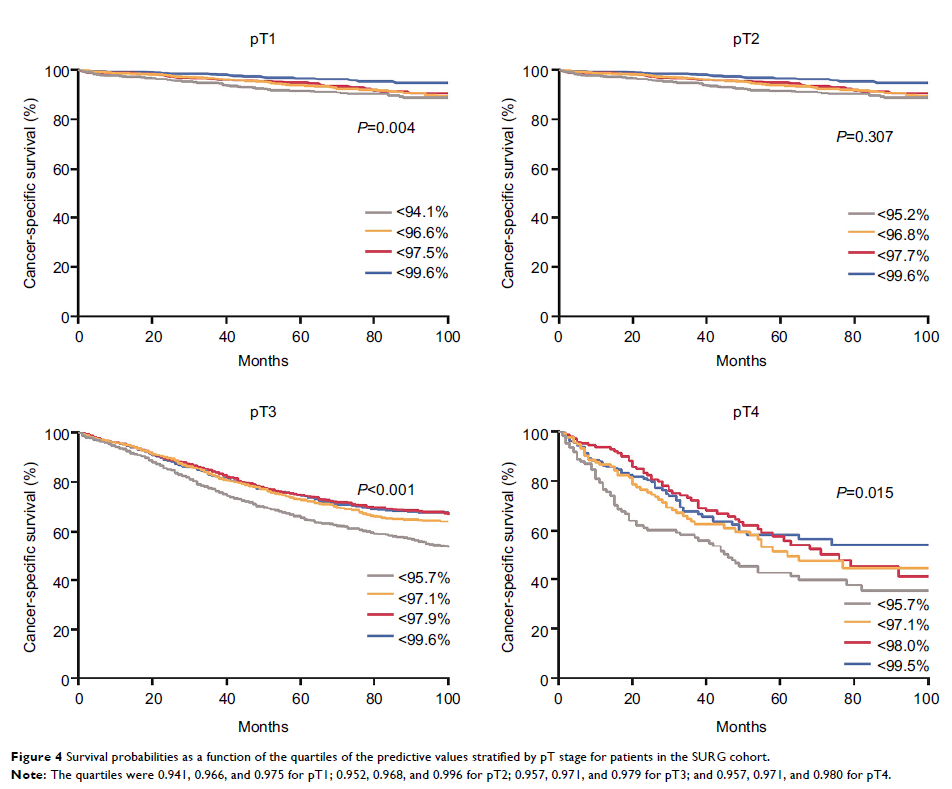9 1 1 5 0
论文已发表
注册即可获取德孚的最新动态
IF 收录期刊
- 2.6 Breast Cancer (Dove Med Press)
- 3.9 Clin Epidemiol
- 3.3 Cancer Manag Res
- 3.9 Infect Drug Resist
- 3.6 Clin Interv Aging
- 4.8 Drug Des Dev Ther
- 2.8 Int J Chronic Obstr
- 8.0 Int J Nanomed
- 2.3 Int J Women's Health
- 3.2 Neuropsych Dis Treat
- 4.0 OncoTargets Ther
- 2.2 Patient Prefer Adher
- 2.8 Ther Clin Risk Manag
- 2.7 J Pain Res
- 3.3 Diabet Metab Synd Ob
- 4.3 Psychol Res Behav Ma
- 3.4 Nat Sci Sleep
- 1.9 Pharmgenomics Pers Med
- 3.5 Risk Manag Healthc Policy
- 4.5 J Inflamm Res
- 2.3 Int J Gen Med
- 4.1 J Hepatocell Carcinoma
- 3.2 J Asthma Allergy
- 2.3 Clin Cosmet Investig Dermatol
- 3.3 J Multidiscip Healthc

接受或不接受新辅助治疗的直肠癌患者的病理淋巴结分期评分:一个术后决策工具
Authors Dai W, Li Y, Wu Z, Feng Y, Cai S, Xu Y, Li Q, Cai G
Received 26 March 2018
Accepted for publication 9 July 2018
Published 7 January 2019 Volume 2019:11 Pages 537—546
DOI https://doi.org/10.2147/CMAR.S169309
Checked for plagiarism Yes
Review by Single-blind
Peer reviewers approved by Dr Andrew Yee
Peer reviewer comments 3
Editor who approved publication: Professor Nakshatri
Background: Lymph
node status can predict the prognosis of patients with rectal cancer treated
with surgery. Thus, we sought to establish a standard for the minimum number of
lymph nodes (LNs) examined in patients with rectal cancer by evaluating the
probability that pathologically negative LNs prove positive during surgery.
Patients and methods: We
extracted information of 31,853 patients with stage I–III rectal carcinoma
registered between 2004 and 2013 from the Surveillance, Epidemiology, and End
Results database and divided them into two groups: the first group was SURG, including
patients receiving surgery directly and the other group was NEO, encompassing
those underwent neoadjuvant therapy. Using a beta-binomial model, we developed
nodal staging score (NSS) based on pT/ypT stage and the number of LNs
retrieved.
Results: In both
cohorts, the false-negative rate was estimated to be 16% when 12 LNs were
examined, but it dropped to 10% when 20 LNs were evaluated. In the SURG cohort,
to rule out 90% possibility of false staging, 3, 7, 28, and 32 LNs would be
necessarily examined in patients with pT1–4 disease, respectively. While in the
NEO cohort, 4, 7, 12, and 16 LNs would be included for examination in patients
with ypT1–4 disease to guarantee an NSS of 90%.
Conclusion: By
determining whether a rectal cancer patient with negative LNs was appropriately
staged, the NSS model we developed in this study may assist in tailoring
postoperative management.
Keywords: nodal
staging score, rectal cancer, lymph node, neoadjuvant therapy, beta-binomial
model
